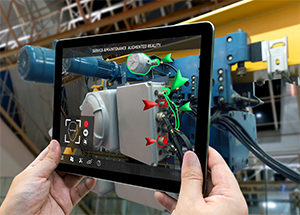Wireless Network AR and VR Will Help Industry
Augmented Reality is growing in industry. Smart manufacturing and remote operation of industrial machinery are two examples of AR applications. Cellular connectivity to devices is a good option for workers that work in a vast range of locations or that are on-the-move. The 5G network will help make AR more efficient to serve workers with its high throughput, low latency, and consistent experience.
ABI Research forecasts that roughly 10% of industrial glasses and standalone Virtual Reality (VR) devices will be connected using 5G by 2026. Marina Lu, a Senior Analyst at ABI Research, says that the 5G connection will not only keep workers more productive and hands-on but safer. Lu explains that that industrial workers would wear smart glasses that would allow them “to see a digital twin overlaid on a physical object with assembly or repair instructions according to customized needs,” among other uses.
Enhanced cellular connectivity will make it possible for AR/VR to expand to more working areas. Eric Abbruzzese, Principal Analyst at ABI Research, said that “mobility is the key to enhance user AR/VR experiences and industry market penetration.” He added it is a time to develop “new business models that can leverage connectivity capabilities and bring value to end users wherever they are operating.”
Research Center:
Broadband
Cellular
Consumer
Home Health
IoT
OTT/Video
Security
Smart Home
SMB
WiFi/Home Networking

